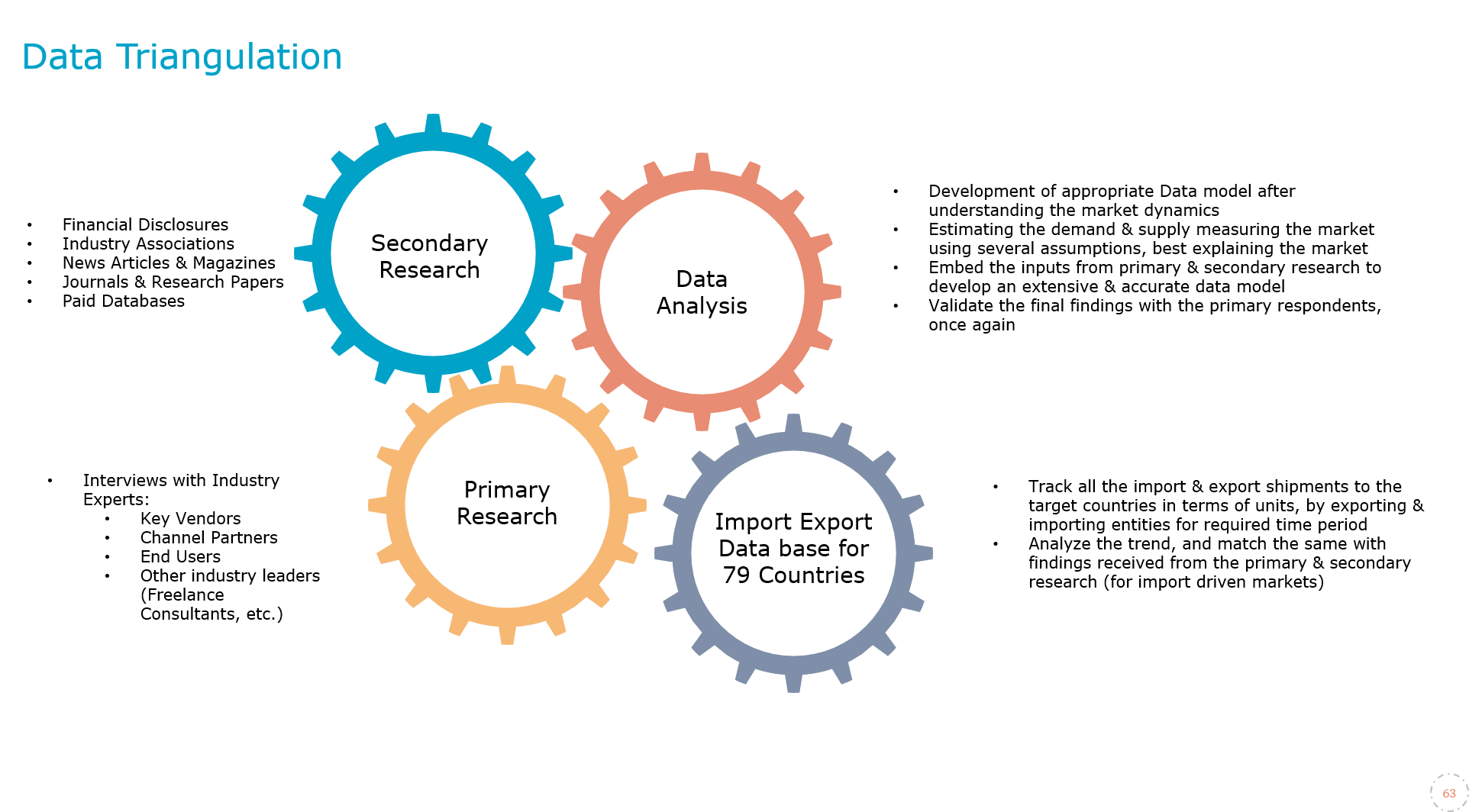
Global Bladder Cancer Treatment Market Research Report: Forecast (2022-2027)
By Diagnosis (Cystoscopy, Urine Tests, Imaging, Biopsy), By Cancer Type (Urothelial Carcinoma, Squamous Cell, Carcinoma, Adenocarcinoma), By Treatment (Surgery, Chemotherapy (Cispl...atin, Gemcitabine, Fluorouracil (5-FU), Mitomycin, Others (Doxorubicin, etc.)), Immunotherapy (Atezolizumab (Tecentriq), Avelumab (Bavencio), Nivolumab (Opdivo), Pembrolizumab (Keytruda), Enfortumab Vedotin (Padcev), Sacituzumab Govitecan (Trodelvy)), Radiation Therapy, Targeted Therapy (Erdafitinib (Balversa))), By End-User (Hospitals, Specialty Cancer Centers, Others (Ambulatory Surgery Centers, etc.)), By Region (North America, South America, Europe, Middle East & Africa, Asia-Pacific), By Country (The US, Canada, Mexico, Brazil, The UK, Germany, France, Italy, Spain, South Africa, GCC, China, Japan, India, Australia, South East Asia), By Company(AstraZeneca PLC, Bristol Myers Squibb, Eli Lilly and Company, F. Hoffmann-La Roche AG, GlaxoSmithKline PLC, Novartis International AG, Pfizer Inc., Sanofi, Others) Read more
- Healthcare
- Jun 2022
- Pages 189
- Report Format: PDF, Excel, PPT
Market Definition
Bladder cancer is when the DNA in the bladder cells mutates and disables the cell growth functions. In many cases, these mutated cells either die or get attacked by the immune system. However, sometimes they might evade the immune system, multiply aggressively, and form a tumor in the bladder. So far, smoking is the most important risk factor for bladder cancer as tobacco has carcinogenic chemicals that pass into the bloodstream, and kidneys filter them into the urine.
Market Insights
The Global Bladder Cancer Market is projected to grow at a CAGR of around 4.6% during the forecast period, i.e., 2022-27. The growth of the market is driven primarily by the rapidly increasing instances of bladder cancer worldwide, coupled with the escalating focus of governments of different countries on developing robust medical infrastructure & increasing the overall healthcare expenditure.
| Report Coverage | Details |
|---|---|
| Study Period | Historical Data: 2017-20 |
| Base Year: 2021 | |
| Forecast Period: 2022-27 | |
| CAGR (2022-27) | 4.6% |
| Regions Covered | North America: The US, Canada, Mexico |
| Europe: Germany, The UK, Germany, France, Italy, Spain, Rest of Europe | |
| Asia-Pacific: China, Japan, India, Australia, South East Asia, Rest of Asia-Pacific | |
| South America: Brazil, Rest of Latin America | |
| Middle East & Africa: South Africa, GCC, Rest of Middle East & Africa | |
| Key Companies Profiled |
AstraZeneca PLC, Bristol Myers Squibb, Eli Lilly and Company, F. Hoffmann-La Roche AG, GlaxoSmithKline PLC, Novartis International AG, Pfizer Inc., Sanofi, Others |
| Unit Denominations | USD Million/Billion |
Besides, massive R&D investments by the leading biotech & pharma companies in bringing advancements in the current diagnoses & treatments of bladder cancer and offering better success rates & effectiveness on patients are also driving the global market.
Governments across different countries are actively spreading awareness campaigns, advertisements, etc., among people about bladder cancer & the availability of effective therapies to cure the illness. In addition, with the rising geriatric population and higher possibilities of bladder cancer in those above 50 years, there are improved screening rates worldwide as a precautionary step, which projects lucrative prospects for the Global Bladder Cancer Market through 2027.
Impact of Covid-19 on the Global Bladder Cancer Market
In 2020, the Covid-19 pandemic introduced a paradigm shift in the functioning of different industries throughout the world & put immense pressure on the entire healthcare sector. The Bladder Cancer Market witnessed numerous unprecedented challenges associated with its global expansion, principally due to shifting priorities of the healthcare sector to address only Covid-19 patients.
As the effect of the Covid-19 virus was severe, governments of different countries imposed lockdowns & stringent movement restrictions to curb the spread of this dreadful disease. Consequently, such limitations restricted movements of all types and restrained non-critical patients from frequent hospital visits.
However, critical cases were addressed by doctors at hospitals while abiding by the safety norms. With digital transformations, healthcare professionals assisted their non-critical patients remotely using online platforms by exchanging reports & prescribing medications, parceling medications, & scheduling tests.
The most prominent challenges for the bladder cancer market during the pandemic were the halt in research operations and the unavailability of funds. Since governments of different countries invested massively in R&D for developing Covid-19 vaccines & cures, drug discoveries & developments associated with bladder cancer got temporarily suspended. Consequently, the leading players in the Global Bladder Cancer Market witnessed a downfall in revenue generation amidst the crisis.

Market Segmentation
Based on the Treatment:
- Surgery
- Chemotherapy
- Cisplatin
- Gemcitabine
- Fluorouracil (5-FU)
- Mitomycin
- Others (Doxorubicin, etc.)
- Immunotherapy
- Atezolizumab (Tecentriq)
- Avelumab (Bavencio)
- Nivolumab (Opdivo)
- Pembrolizumab (Keytruda)
- Enfortumab Vedotin (Padcev)
- Sacituzumab Govitecan (Trodelvy)
- Radiation Therapy
- Targeted Therapy
- Erdafitinib (Balversa)
Amongst all treatments, chemotherapy remains the major contributor to the growth of the Global Bladder Cancer Market. Currently, it is the first-line treatment given to bladder cancer patients. The growing awareness among people about the improving effectiveness & success rates of drugs like cisplatin or carboplatin is driving the demand for chemotherapy treatments for bladder cancer patients and, in turn, fueling the overall market growth.
In some cases, chemotherapy is combined with other treatments to enhance its effectiveness and OS (overall success) rates for bladder cancer patients. Depending upon the case, the oncologist might suggest performing chemotherapy to reduce the tumor size and then opt for surgery, while in some cases, the reverse practice is offered. Chemotherapy drugs are delivered to the bladder using a catheter inserted through the urethra. The most prominent types of chemotherapy drugs used in the treatment of bladder cancer include Cisplatin, Mitomycin-C, Gemcitabine (Gemzar), Docetaxel (Taxotere), & Valrubicin (Valstar), among others.
Besides, with the growing awareness among people about the widespread availability of chemotherapy drugs, coupled with the rising cases of bladder cancer in people, the leading players in the market are set to witness remunerative prospects in the years to come.
Based on the Diagnosis:
- Cystoscopy
- Urine Tests
- Imaging
- Biopsy
Here, cystoscopy is anticipated to dominate the Global Bladder Cancer Market with the largest share through 2027, principally due to its benefits like a clearer observation of the interiors of the bladder & urethra using a hollow tube known as a cystoscope.
Since this diagnosis allows direct visual inspection of the urothelium, healthcare professionals are able to attain a better understanding of the tumor, size, placement, & other information and prescribe the best treatments. Hence, the demand for cystoscopy for bladder cancer diagnosis is elevating rapidly across the world and, in turn, contributing to the overall market growth.
Regional Landscape
Geographically, the Global Bladder Cancer market expands across:
- North America
- South America
- Europe
- Middle East & Africa
- Asia-Pacific
Amongst all regions globally, North America is anticipated to dominate the Bladder Cancer Market with the largest share during 2022-27. It attributes to various aspects, including the rapidly growing patient pool for bladder cancer, rigorous R&D activities across the healthcare sector, especially in the field of oncology, massive investments in developing new drugs for cancer treatment, well-established healthcare facilities, and the extensive presence of leading biotech & pharmaceutical companies across the region.
Governments of different countries are actively focusing on enhancing the healthcare infrastructure to cater to the increasing influx of patients and expand medical tourism. As a result, the growing number of hospitals, research centers & institutes, cancer specialty centers, and pharmacies, among others, are instigating the leading players in the regional market to boost their drug development capacities in order to meet the burgeoning requirements across different medical facilities across North America.
Moreover, countries like the US & Canada are the early adopters of technologically advanced healthcare solutions, i.e., enabling the market players to expand their product portfolio by offering new therapeutic drugs & diagnosis equipment. It would help patients procure medications & therapies at ease and, in turn, stimulate the regional market growth through 2027.
Possible Restraint in the Global Bladder Cancer Market
- High Treatment Cost & Unavailability of Diagnostic Centers across Rural Areas
The high diagnosis & treatment costs are challenging the affordability of many bladder cancer patients across different corners of the world. Besides, there is less awareness among people about these treatments and the unavailability of diagnostic centers, especially across rural areas. These aspects are likely to hamper the fledged growth of the Global Bladder Cancer Market through 2027.
Key Questions Answered in the Market Research Report:
- What are the overall statistics or estimates (Overview, Size- By Value, Forecast Numbers, Segmentation, Shares) of the Global Bladder Cancer Market?
- What are the region-wise industry size, growth drivers, and challenges?
- What are the key innovations, opportunities, current & future trends, and regulations in the Global Bladder Cancer Market?
- Who are the key competitors, their key strengths & weaknesses, and how do they perform in the Global Bladder Cancer Market based on the competitive benchmarking matrix?
- What are the key results derived from surveys conducted during the Global Bladder Cancer Market study?
Frequently Asked Questions
- Introduction
- Research Process
- Assumption
- Market Segmentation
- Market Definition
- Executive Summary
- Global Bladder Cancer Market Trends & Insights
- Global Bladder Cancer Market Regulation & Policy, By Country
- Global Bladder Cancer Market Dynamics
- Growth Drivers
- Challenges
- Impact Analysis
- Global Bladder Cancer Market Hotspot and Opportunities
- Global Bladder Cancer Market Outlook, 2017- 2027
- Market Size and Analysis
- By Revenues in USD Million
- Market Share and Analysis
- By Diagnosis
- Cystoscopy
- Urine Tests
- Imaging
- Biopsy
- By Cancer Type
- Urothelial Carcinoma
- Squamous Cell Carcinoma
- Adenocarcinoma
- By Treatment
- Surgery
- Chemotherapy
- Cisplatin
- Gemcitabine
- Fluorouracil (5-FU)
- Mitomycin
- Others (doxorubicin, etc.)
- Immunotherapy
- Atezolizumab (Tecentriq)
- Avelumab (Bavencio)
- Nivolumab (Opdivo)
- Pembrolizumab (Keytruda)
- Enfortumab vedotin (Padcev)
- Sacituzumab govitecan (Trodelvy)
- Radiation Therapy
- Targeted Therapy
- Erdafitinib (Balversa)
- By End-User
- Hospitals
- Specialty Cancer Centers
- Others (Ambulatory Surgery Centers, etc.)
- By Region
- North America
- South America
- Europe
- Middle East & Africa
- Asia-Pacific
- By Company
- Competition Characteristics
- Revenue Shares
- Competitor Placement in MarkNtel Advisor’s Quadrant
- By Diagnosis
- Market Size and Analysis
- North America Bladder Cancer Market Outlook, 2017- 2027
- Market Size and Analysis
- By Revenues in USD Million
- Market Share and Analysis
- By Diagnosis
- By Cancer Type
- By Treatment
- By End-User
- By Country
- The US
- Canada
- Mexico
- Market Size and Analysis
- South America Bladder Cancer Market Outlook, 2017- 2027
- Market Size and Analysis
- By Revenues in USD Million
- Market Share and Analysis
- By Diagnosis
- By Cancer Type
- By Treatment
- By End-User
- By Country
- Brazil
- Rest of Latin America
- Market Size and Analysis
- Europe Bladder Cancer Market Outlook, 2017- 2027
- Market Size and Analysis
- By Revenues in USD Million
- Market Share and Analysis
- By Diagnosis
- By Cancer Type
- By Treatment
- By End-User
- By Country
- The UK
- Germany
- France
- Italy
- Spain
- Rest of Europe
- Market Size and Analysis
- Middle East & Africa Bladder Cancer Market Outlook, 2017- 2027
- Market Size and Analysis
- By Revenues in USD Million
- Market Share and Analysis
- By Diagnosis
- By Cancer Type
- By Treatment
- By End-User
- By Country
- South Africa
- GCC
- Rest of Middle East & Africa
- Market Size and Analysis
- Asia-Pacific Bladder Cancer Market Outlook, 2017- 2027
- Market Size and Analysis
- By Revenues in USD Million
- Market Share and Analysis
- By Diagnosis
- By Cancer Type
- By Treatment
- By End-User
- By Country
- China
- Japan
- India
- Australia
- South East Asia
- Rest of Asia-Pacific
- Market Size and Analysis
- Global Bladder Cancer Market Key Strategic Imperatives for Success and Growth
- Competitive Outlook
- Competition Matrix
- By Application Portfolio
- Brand Specialization
- Target Markets
- Target by Applications
- Research & Development
- Strategic Alliances
- Strategic Initiatives
- Company Profiles (Business Description, By Application Segments, Business Segments, Financials, Strategic Alliances/ Partnerships, Future Plans)
- AstraZeneca PLC
- Bristol Myers Squibb
- Eli Lilly and Company
- F. Hoffmann-La Roche AG
- GlaxoSmithKline PLC
- Novartis International AG
- Pfizer Inc.
- Sanofi
- Others
- Competition Matrix
- Disclaimer
MarkNtel Advisors follows a robust and iterative research methodology designed to ensure maximum accuracy and minimize deviation in market estimates and forecasts. Our approach combines both bottom-up and top-down techniques to effectively segment and quantify various aspects of the market. A consistent feature across all our research reports is data triangulation, which examines the market from three distinct perspectives to validate findings. Key components of our research process include:
1. Scope & Research Design At the outset, MarkNtel Advisors define the research objectives and formulate pertinent questions. This phase involves determining the type of research—qualitative or quantitative—and designing a methodology that outlines data collection methods, target demographics, and analytical tools. They also establish timelines and budgets to ensure the research aligns with client goals.
2. Sample Selection and Data Collection In this stage, the firm identifies the target audience and determines the appropriate sample size to ensure representativeness. They employ various sampling methods, such as random or stratified sampling, based on the research objectives. Data collection is carried out using tools like surveys, interviews, and observations, ensuring the gathered data is reliable and relevant.
3. Data Analysis and Validation Once data is collected, MarkNtel Advisors undertake a rigorous analysis process. This includes cleaning the data to remove inconsistencies, employing statistical software for quantitative analysis, and thematic analysis for qualitative data. Validation steps are taken to ensure the accuracy and reliability of the findings, minimizing biases and errors.

4. Data Forecast and FinalizationThe final phase involves forecasting future market trends based on the analyzed data. MarkNtel Advisors utilize predictive modeling and time series analysis to anticipate market behaviors. The insights are then compiled into comprehensive reports, featuring visual aids like charts and graphs, and include strategic recommendations to inform client decision-making









